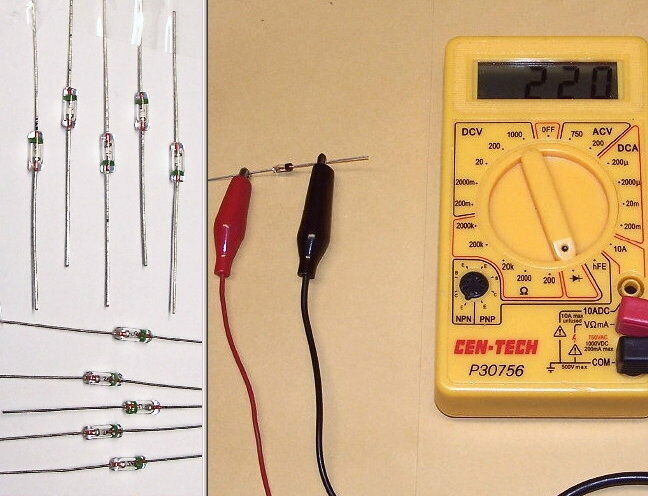-40%
Carborundum Silicon Carbide Crystal Radio Radio Detector Diode-7/16 Diameter
$ 5.28
- Description
- Size Guide
Description
1 piece Precision Cast Silicon Carbide Crystal Radio Crystal Radio DiodeCast in Low temp alloy
7/16" Diameter Suitable to fit Most Older and Newer Detectors
This Cast Crystal is Brand New and recently Manufactured
Silicon Carbide (Carborundum) Requires Higher Contact force with the probe or Whisker and May need Circuit Biasing (See Schematic in Photo Gallery)
Carborundum is Silicon Carbide which is a man made substance that is created in very hot electric furnaces. It is one of the hardest materials known and is used for grinding and in sharpening stones. Carborundum crystal detectors were often used in shipboard wireless stations because it required a very stiff contact and stayed adjusted very well. It was also resistant to currents produced by nearby spark transmitters. Carborundum works best when it is biased with a "AA" battery and a 50 K ohm potentiometer to adjust the voltage. A circuit diagram for the biasing is shown in the Picture Gallery. These Carborundum crystals are mounted in a low melting temperature alloy. The alloy used for mounting these crystals melts at 203 Degrees
Fahrenheit
, which is below the boiling point of water! Carborundum crystals are not affected by the heat that is inevitable with conventional mounted crystal detectors that are set in molten lead, but we mount them in low temperature alloy anyway because it is safer for us to use the lower temperature alloys. Dimensions are 7/16" diameter and
approximately
1/4" high.
Crystal Detector (Actual crystal may vary in shape and size from picture)
Crystal mounted and Cast in 7/16" Diameter Low temp alloy to prevent any Crystal damage
FACTS ABOUT OLD SCHOOL CRYSTAL DIODES
Not every contact position on the crystal will perform, so fiddling with the ‘cat's whisker’ to find a sweet spot does take patience and some acquired skill.
Cat Whisker:
The "cat whisker", a springy piece of thin metal wire, formed the metal side of the junction. Phosphor bronze wire of about 30 gauge was commonly used because it had the right amount of springiness.
Cat whisker detector:
It consisted of a pea-size piece of crystalline mineral in a metal holder, with its surface touched by a fine metal wire or needle (the "cat whisker"). The contact between the tip of the wire and the surface of the crystal formed a crude unstable point-contact metal–semiconductor junction, forming a diode. The wire whisker is the anode, and the crystal is the cathode; current can flow from the wire into the crystal but not in the other direction.
Having a lot of patience and a steady hand are needed when you listen with a piece of the rock. But this can also be very rewarding when you can hear the first station using a cats whisker detector.













